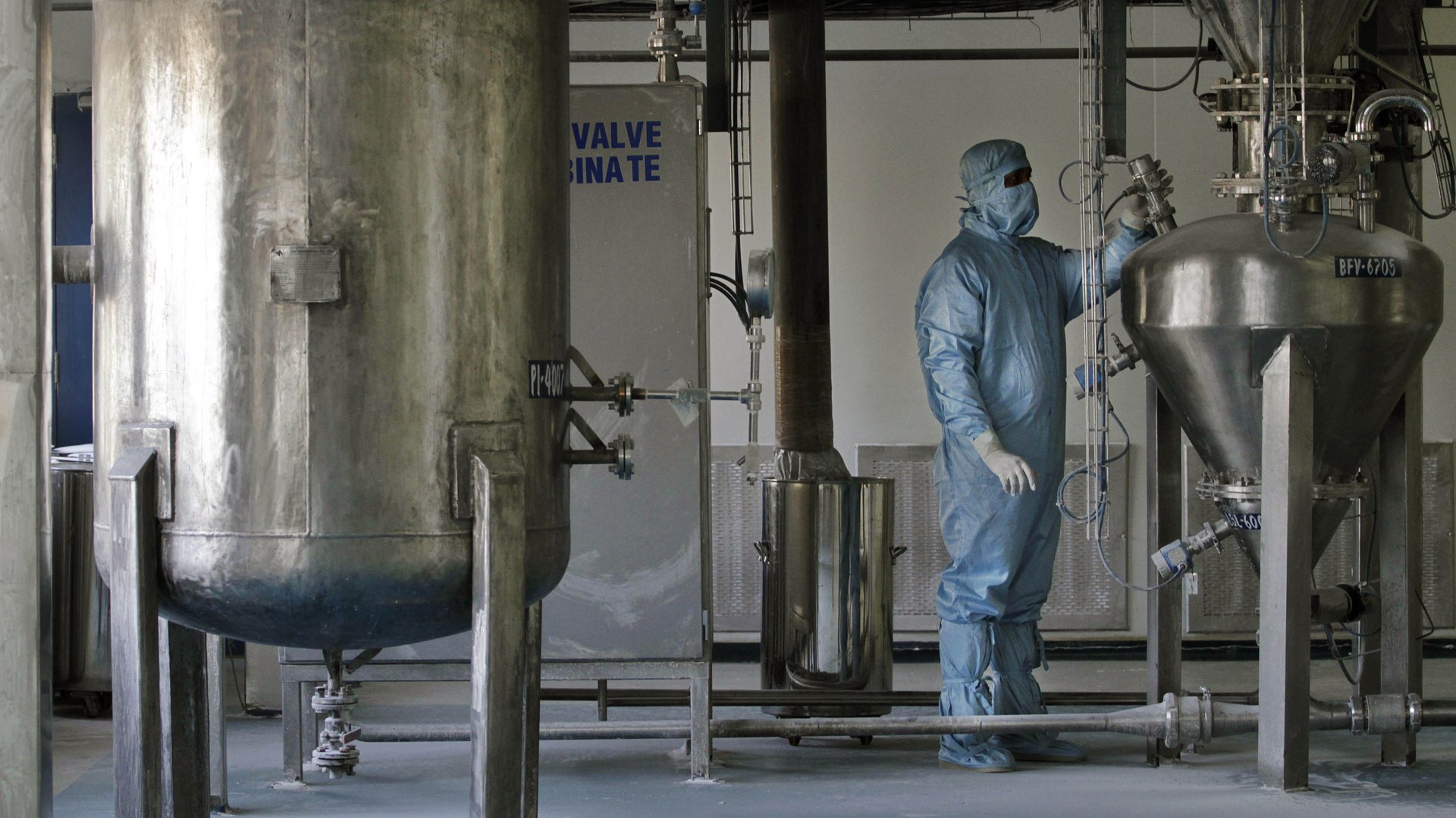Teva, maker of generic and brand-name drugs, feels the pressure of both industries
The business of Israel-based Teva Pharmaceuticals, the largest manufacturer of generic drugs, can be neatly divided into sets of halves. Half of its revenue comes from its branded medicines and half from its generics. Half of its business comes from the US, and half from outside. That remaining half is split half-and-half between Europe and the rest of the world.


The business of Israel-based Teva Pharmaceuticals, the largest manufacturer of generic drugs, can be neatly divided into sets of halves. Half of its revenue comes from its branded medicines and half from its generics. Half of its business comes from the US, and half from outside. That remaining half is split half-and-half between Europe and the rest of the world.
The company announced its fourth-quarter earnings from 2012 this morning, and the numbers reveal what it can mean to straddle the fence between branded products and generics: If your hold on the generic market slips while you’re simultaneously dealing with an expiring patent on one of your brands, business isn’t so stellar.
Teva’s revenue for the last quarter of 2012 was down 8% over that in 2011, for two reasons. Its patent on Provigil, a sleep-disorder drug, expired in 2011, causing a drop in fourth-quarter Provigil revenue from $350 million to $25 million. In addition, starting in late October 2011, Teva, along with US-based Dr. Reddy’s, had the exclusive six-month privilege of manufacturing the generic version of Eli Lilly’s Zyprexa. That buoyed its sales in the final quarter of that year, but not in 2012.
In the coming years, the company will face challenges to both the brand-name and generic sides of its business, especially in the rich world. Its big blockbuster drug, Copaxone, will lose its patent next year. The multiple sclerosis treatment accounts for a full 20% of the company’s overall revenue, and thus 40% of its brand-name business. As for generics, the entire market is being hit by the so-called patent cliff: There are fewer big drugs going off-patent, which means that generic makers won’t be able to take advantage of as many exclusive initial production deals, which are a crucial part of their business.
Yet Teva’s position is still strong. It is the biggest manufacturer in the biggest area of growth in pharmaceuticals: Analysts estimate that the global market for generic drugs will grow from $240 billion in 2011 to at least $400 billion in 2016 (pdf, page 10). And the company’s yearly revenue has grown steadily for the past decade:
